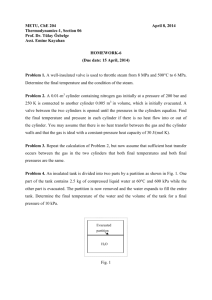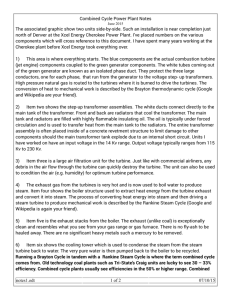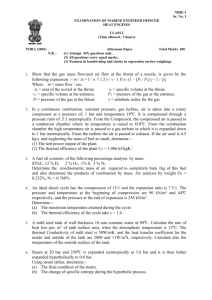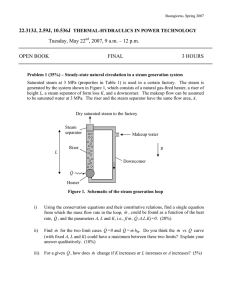22.313J, 2.59J, 10.536J Tuesday, April 3 , 2007, 2:00 – 3:30 p.m.
advertisement
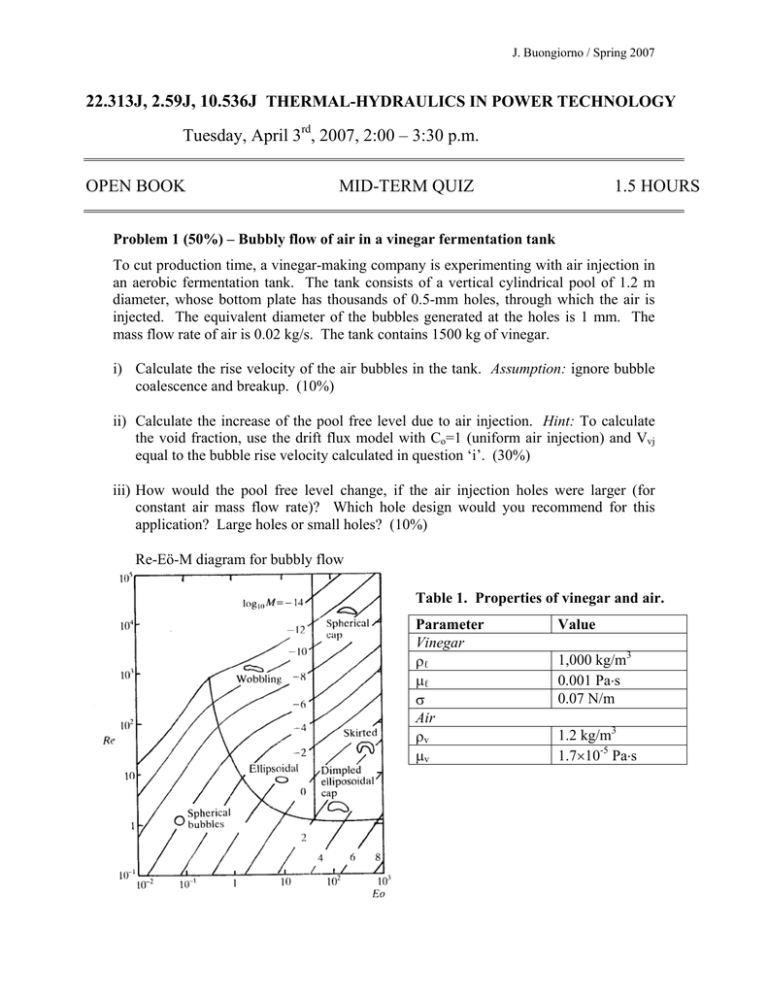
J. Buongiorno / Spring 2007 22.313J, 2.59J, 10.536J THERMAL-HYDRAULICS IN POWER TECHNOLOGY Tuesday, April 3rd, 2007, 2:00 – 3:30 p.m. OPEN BOOK MID-TERM QUIZ 1.5 HOURS Problem 1 (50%) – Bubbly flow of air in a vinegar fermentation tank To cut production time, a vinegar-making company is experimenting with air injection in an aerobic fermentation tank. The tank consists of a vertical cylindrical pool of 1.2 m diameter, whose bottom plate has thousands of 0.5-mm holes, through which the air is injected. The equivalent diameter of the bubbles generated at the holes is 1 mm. The mass flow rate of air is 0.02 kg/s. The tank contains 1500 kg of vinegar. i) Calculate the rise velocity of the air bubbles in the tank. Assumption: ignore bubble coalescence and breakup. (10%) ii) Calculate the increase of the pool free level due to air injection. Hint: To calculate the void fraction, use the drift flux model with Co=1 (uniform air injection) and Vvj equal to the bubble rise velocity calculated in question ‘i’. (30%) iii) How would the pool free level change, if the air injection holes were larger (for constant air mass flow rate)? Which hole design would you recommend for this application? Large holes or small holes? (10%) Re-Eö-M diagram for bubbly flow Table 1. Properties of vinegar and air. Parameter Vinegar ρℓ μℓ σ Air ρv μv Value 1,000 kg/m3 0.001 Pa⋅s 0.07 N/m 1.2 kg/m3 1.7×10-5 Pa⋅s J. Buongiorno / Spring 2007 Problem 2 (45%) – Droplets generation and removal in a steam turbine A significant amount of moisture is generated by steam expansion in the steam turbine of a large power plant. This moisture mostly deposits on the turbine blades forming liquid rivulets, which creep on the surface of the blade and reach the blade tip, where reentrainment by steam occurs (see Figure 1). i) Steam at 1.2 MPa and 100 m/s flows around a certain blade. Give an upper bound estimate for the diameter of the droplets that are entrained at the tip of the blades. Hint: the critical Weber number is 22 for this application. (5%) To prevent erosion of the turbine internals, it is desired to remove the droplets by means of a wire separator. The wire diameter, D, is 1 mm and the wire-mesh pitch, L, is 5 mm. ii) Assuming all entrained droplets are of the size calculated in ‘i’, calculate the minimum number of wire screens, N, needed to reduce the amount of droplets in the steam by a factor 4. The maximum allowable steam velocity (to prevent breakthrough) is 10 m/s for this wire separator. (30%) iii) Would you recommend this separator design? If yes, list its attractive features. If not, recommend another type of separator that you expect to perform better in this application. (10%) Liquid rivulets Steam Droplet re-entrainment at blade tip Blade Figure 1. A steam turbine blade with droplet re-entrainment Table 2. Useful properties of saturated water at 1.2 MPa (188°C). Parameter ρf ρg μg σ Value 878 kg/m3 6.1 kg/m3 1.5×10-5 Pa⋅s 0.04 N/m J. Buongiorno / Spring 2007 Problem 3 (5%) – Effect of droplet entrainment on void fraction and pressure drop in annular flow Consider steady-state, adiabatic, vertical flow of a liquid/vapor mixture in a round channel. The flow regime is annular. At a certain axial location the rate of droplet entrainment exceeds the rate of droplet deposition. i) What is the sign of dα at that location? Explain. (5%) dz ⎛ dP ⎞ ii) What is the sign of ⎜ ⎟ at that location? (Optional for 5% extra credit) ⎝ dz ⎠ acc



